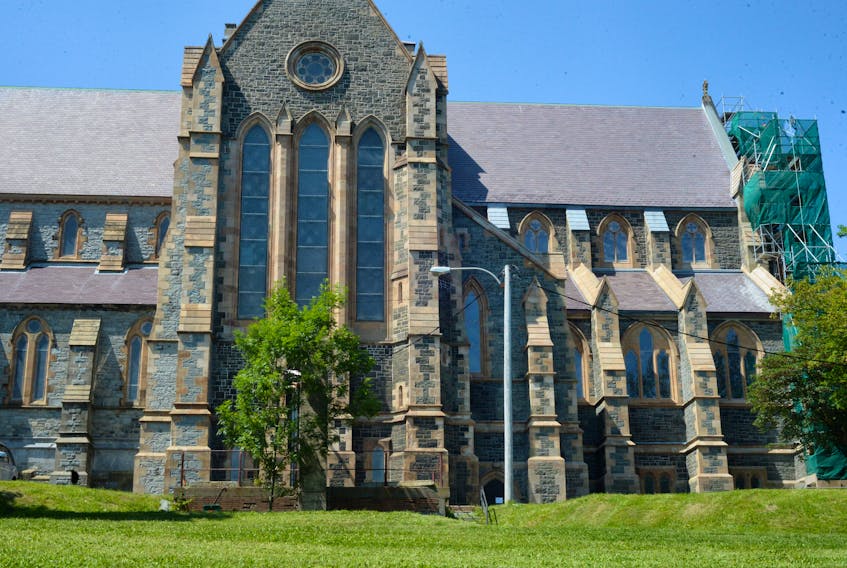From 1500 to 1815, Newfoundland was the Alberta of the Americas.
Attracted by wages double the prevailing rate at home, close to two million times young men from the West Country of England or the Waterford area of Ireland sailed to Newfoundland and back. Many failed to return. Some settled here permanently, but many died fishing. Thousands of these men are buried in the churchyard of the Anglican Cathedral.
This was the city’s only cemetery from 1699 until 1811, and the only Protestant cemetery until the 1840s. We don’t know how many people are buried there because parish records are incomplete. My conservative analysis suggests at least 10,850.
In the pre-industrial world, waged work was for young people, while death normally came either much earlier or considerably later in life. It is because of the extraordinarily large numbers of youth engaged in the fishery that there are so many waged workers buried here. More than in any other pre-Confederation burial ground in Canada.
Eighteenth-century burial practices saw people buried in simple shrouds, stacked up to a dozen deep. The seven-foot-high stone wall along Duckworth Street literally retains their remains.
Priests were responsible for parish records. There were no standardized forms. Who merited mention and what was recorded about them reflected the priest’s own values. We have no records for 70 of the years between 1699 and 1815, when migratory waged workers were the bulk of the labour force. The graph plots the longest run from 1752 to 1790.
The absence of any increase in burials despite the massive peacetime expansion to 20,000 young men coming over in a single season by the 1770s matters. As does the close relationship between baptisms and burials, typical of settler colonies without large numbers of migrants. Both suggest parish records include only those burials for which the priest was paid and so fishers consigned to paupers’ graves and most infant deaths went unrecorded.
Thus, extant records are not just incomplete, they are partial. Who and what was recorded is so idiosyncratic, we cannot simply extrapolate from these numbers to fill in the missing years. However, by critically listening to the silences in these records, we can begin to assess the scale of what is missing.
On Oct. 4, 1787, Rev. Walter Price noted that “during my absence (of three weeks) the Clerk buried ten persons.” This is triple the number one would expect, as it included those for whom the priest would not have been paid. If we only assume two fishers in pauper graves for every three recorded burials during the fishing season, 780 burials of wage workers went unrecorded.
Unrecorded infant deaths would minimally have been a quarter of live births, but simply taking a quarter of actual baptisms adds another 300 burials to the 1,974 in the parish records. Adding in the years missing would make a conservative estimate of 3,400 burials between 1752 and 1790.
Extrapolating from these revised figures suggests at least 8,200 people were buried in the area currently zoned as a cemetery by the end of the seasonal fishery in 1815. No wonder that as early as 1802, Gov. James Gambier reported to London that “the Burying Ground adjoining the Church is so full of bodies that it is absolutely necessary to have some other place to bury the dead.”
Extant records indicate a further 2,650 burials by 1845.
The unique character of this cemetery, with its large wage-earning population, makes it imperative that city council preserve all those cathedral grounds currently zoned as a cemetery from any future development.
Failure to do so will seriously compromise the creation of an invaluable public history site and it would add insult to injury. Anglican priests 265 years ago chose to deny these workers the dignity of properly recording their burials.
This Monday, city council might well authorize that same church’s desecration of their remains. Now is the time for both the church and city to reach out, listen to, and learn from the life stories of these infants and waged men and women.
Robert Sweeny,
St. John’s
RELATED:
• LETTER: Anglican Cathedral annex plan must change
• LETTER: Let’s have more debate on the St. John's Anglican Cathedral issue








